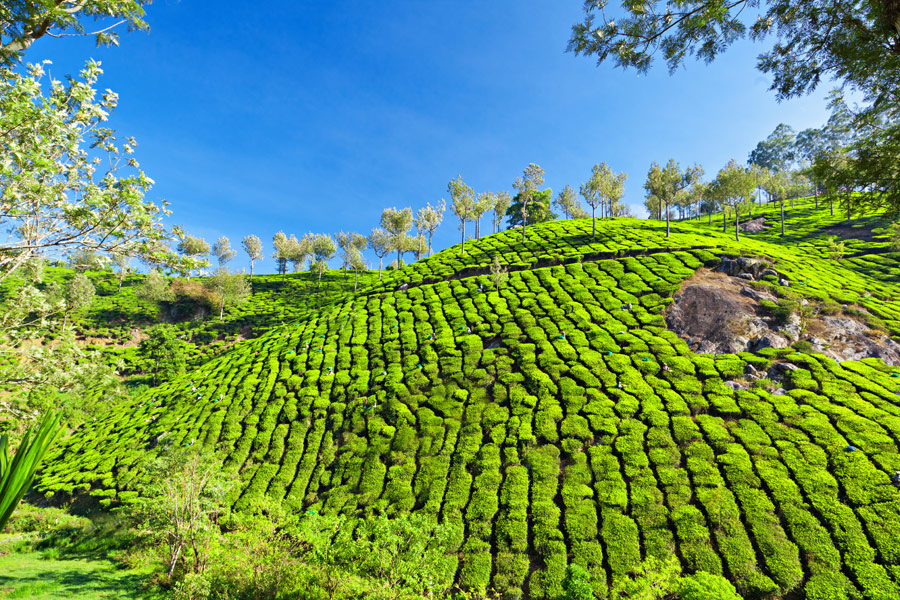[fshow photosetid=72157651880423934]
Mumbai, Goa, Varanasi and Delhi didn’t become travellers’ favourites without reason; each offer something unique whether it be tropical beaches, cosmopolitan cool, cultural abundance or invigorating sensory overload. But why not venture out to more unknown and less crowded parts of India? Sikkim, the country’s least populated state, is a good place to start.
While many people may visit Sikkim in order to escape the crowds, many still decide to spend a few days in Darjeeling beforehand to soak up some mountain air and, of course, potfuls of tea. The story goes that it was a British civil surgeon, Dr. Campbell, who introduced tea to this part of India, with seeds stolen from China where he had been stationed with the Indian Medical Service – and tea remains one of the major attractions in this quaint town in the mountains. Another popular pastime is to enjoy a ride on the Toy Train of the Darjeeling Himalayan Railways, which has been operating since 1880. The train ride to Ghum, once the highest railway station in the world, takes around two hours, despite the distance being a mere 14 kilometres.
Beautiful Home
The word Sikkim is thought to derive from the Limbu words ‘su’ and ‘khyim’ meaning ‘New Home’. Located in the Himalayas in the northeastern part of India, it is landlocked by Nepal, Bhutan and Tibet and travellers who have been to any of these places will recognise some similarities; people have strong east-Asian features and the fare is distinctly different from what many consider Indian food. Culturally and religiously there are also similarities; prayer flags wave in the wind outside monasteries, and crafts and arts depict similar historical and cultural markers.
Getting around in Sikkim can be quite a time consuming endeavour. Although the state is small in size – little more than 7000km2 – the mountainous terrain means short distances often take a lot longer to traverse than anticipated. That shouldn’t discourage you, however, as the drive is very picturesque. At times, you will see the peaks of snow-clad mountains – the world’s third-highest mountain, Kangchenjunga at 8,586 metres, sits on the border of Nepal and India – and at other times you will find yourself driving alongside mighty rivers in the depth of a valley. The vegetation varies from terrace farms with tea and cardamom bushes to dense subtropical forests and alpine shrubs and meadows.
The Slow Life
Given the beautiful natural environment in Sikkim, trekking is one of the major activities. There is something for everyone; from the challenging Kangchenjunga that follows the mountain via the Kabru, Rathong and Talung ranges towards its south and the Pyramid and Kirat Chuli peaks towards its north. For less experienced climbers and those looking for a more moderate trek, the Dzongri trek from Yuksom to Dzongri is perfect. It offers superb views of the Kangchenjunga but also leaves time to visit small villages along the way.
There are also several one day treks out of Yuksom, which also serves as the starting point for many of the longer treks. The Yuksom to Tashiding trek is an easy one-day walk that many do as an alternative to the longer more challenging tours. The walk starts from Yuksom and goes up to the Dubdi Monastery, a Buddhist monastery of the Nyingma sect, built in 1701. The trek continues through fields of cardamom and into small villages where small children with rosy cheeks and colourful clothes play with fluffy dogs while their mothers sit and chat. With no schools around, no cities, no factories and no offices, walking through these small villages and wondering what their inhabitants do all day is a nice reminder that there are other existences out there.
Culinary Delight
Out of India’s many regional cuisines, north Indian food is perhaps the most widely spread and the one people around the world most readily recognise. Although you will find typical north Indian fare in Sikkim, there are also several Chinese and Nepalese influences, creating a unique cuisine. Noodles are the go-to staple, rather than rice, and momos, a small gyoza-like, steamed dumpling, are common. Made of a simple dough based on wheat flour and water, small dough discs are filled with onions, cabbage, spices and sometimes meat, before they are carefully folded and steamed until the dough is cooked. Eaten on their own or dipped in a sauce made of peanuts, grilled tomatoes and garlic, they are addictive!
If you travel to Sikkim during April to June, you will likely encounter a dish made with special ferns that are indigenous to this region. Sold in bundles at small roadside stalls, the ferns are collected in the forest by locals. Only the tips are used and cooked with onion, tomatoes, chillies and spices they make up a highly fragrant side dish that’s healthy to boot.
Tips:
It is necessary for foreigners to obtain a Restricted Area Permit before travelling in Sikkim. These are available at the Sikkim state borders, which can only be crossed via road in two places; Rangpo or Meili.
- It is highly recommended to get some help with the special Restricted Area Permit as well as having a local guide to help you navigate the region. Go Beyond is an agency in Delhi with great offers and contacts in Sikkim www.gobeyond.asia
- The climate in Sikkim ranges from subtropical in the south to tundra in the north. The mountainous terrain also means with within just an hour drive, the temperature could drop or rise significantly. Be prepared – bring both shorts and sweaters.
- There is no airport in Darjeeling. The closest airport to Sikkim is Bagdogra, near Siliguri. Jet Airways fly daily from Kolkata and Delhi, amongst others www.jetairways.com

